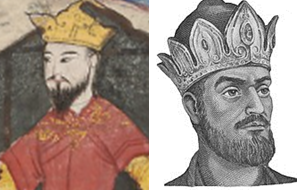Great Seljuk Empire: Facts and Accomplishments
The Great Seljuk Empire, commonly referred to as the Seljuk Dynasty, stands out as a prominent medieval Turkic ruling dynasty with enduring influence over the history of both the Middle East and Central Asia.

The Seljuk Dynasty remains a significant chapter in the history of the Islamic world and the broader Eurasian region, known for its cultural synthesis, military conquests, and contributions to the development of Islamic civilization. Image: The Great Seljuk Empire in the 11th century
In the article below, World History Edu presents key insights into this remarkable empire:
Founding and Origins
The Seljuk Dynasty was founded by Tughril Beg, often referred to as Tughril I, and his brother Chaghri Beg in the mid-11th century.
The Seljuks were originally part of the Oghuz Turkic tribal confederation and hailed from the region of Transoxiana, in modern-day Central Asia.
Expansion and Empire
Under the leadership of Tughril I and his successors, the Seljuk Empire expanded rapidly. It came to encompass a vast territory, including parts of Iran, Iraq, Anatolia (modern-day Turkey), and beyond.
The Seljuks played a key role in the Turkification and Islamization of these regions.

Toghrol Tower, a 12th-century monument south of Tehran, Iran, commemorating Seljuk ruler Toğrül
Turco-Persian Tradition
The Seljuks adopted the Persian language and culture, leading to the development of the Turco-Persian tradition. This cultural fusion combined Turkic and Persian elements, influencing art, literature, and governance.
Religion
The Seljuks were Sunni Muslims. Their conversion to Islam had a profound impact on their identity and interactions with the Islamic world.
Famous Rulers
Some of the most notable Seljuk rulers include Tughril Beg, Alp Arslan, Malik Shah, and Sanjar. Each of these rulers left a lasting legacy in various aspects of the empire’s history.

Examples of famous Seljuk rulers (i.e. “Great Seljuks”) include Tughril, Alp Arslan, and Malik Shah I. Alp Arslan, the son of Chaghri Beg, secured a famous victory at the Battle of Manzikert in 1071 against the Byzantine Empire. The battle was a significant event in Seljuk history.
Military Achievements
The Seljuks were known for their military prowess and played a significant role in the conflicts of their time, including battles against the Byzantine Empire and the Crusaders.
For example, Alp Arslan’s victory at the Battle of Manzikert in 1071 was a major turning point in the Seljuk-Byzantine rivalry. Similarly, Malik Shah, the son of Alp Arslan, presided over a period of great prosperity and cultural achievement within the empire.

When translated into Turkish, Sultan Alp Arslan’s name means “Heroic Lion”. His name certainly befits the feats that he accomplished. | Image: Statue of Alp Arslan
Cultural Patronage
The Seljuks were patrons of Persian culture, art, and literature. They supported scholars, poets, and artists, contributing to a cultural flourishing known as the “Malikian Renaissance.”
Decline and Fragmentation
Over time, the Seljuk Empire faced internal strife and external threats, including invasions by other Turkic groups and the Crusaders.
The empire eventually fragmented into smaller Seljuk Sultanates, including the Sultanate of Rum in Anatolia and the Sultanate of Kerman in Persia.
Legacy
The Seljuk Dynasty left a lasting legacy in the regions they ruled, influencing the development of Islamic art, architecture, and culture.
Their contributions to the Turco-Persian tradition and their role in the medieval history of the Middle East continue to be subjects of historical study and fascination.
End of the Dynasty
The Seljuk Dynasty began to decline in the late 12th century, and by the early 13th century, the empire was weakened.
The Mongol invasions in the 13th century led to the ultimate downfall of the Seljuk Dynasty and the end of their rule in many regions.
More on the Seljuks
- The rise of the Mongol Empire in the 13th century ultimately resulted in the fall of the Seljuk Dynasty in many regions.
- The Seljuk empire’s interaction with the Crusaders and other Islamic states left a lasting impact on the geopolitics of the time.



























